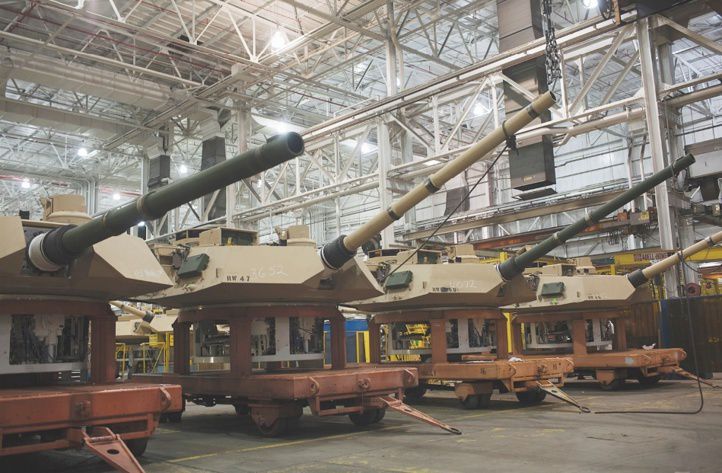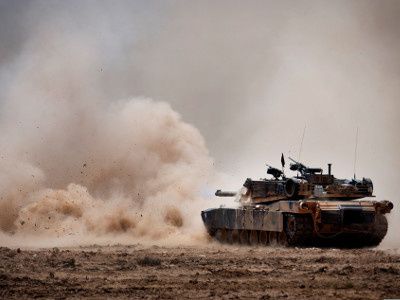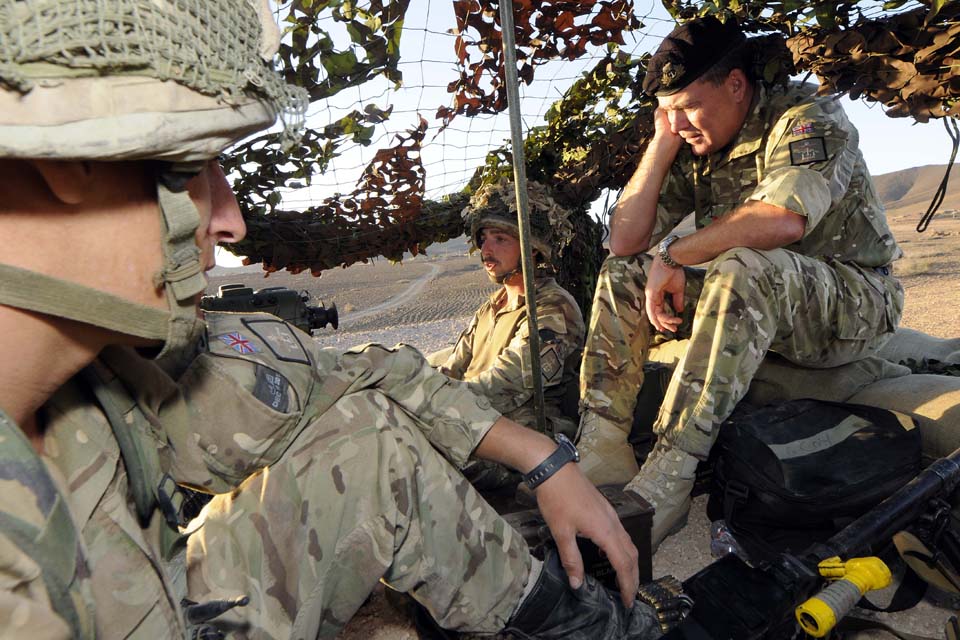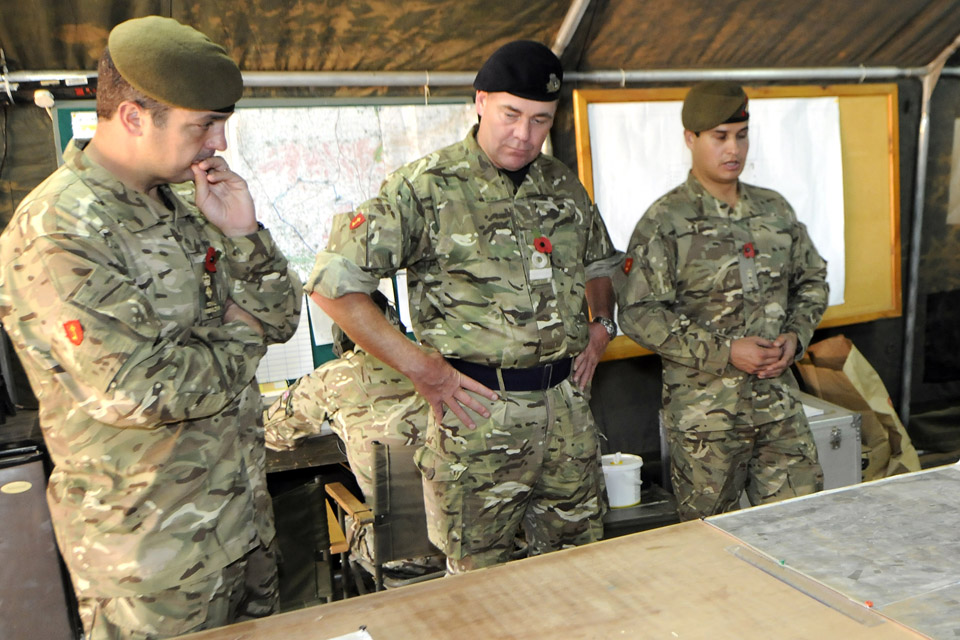18 March 2015 by defenceWeb
African arms imports increased by 45 per cent between the periods 2005–2009 to 2010–14, with Algeria importing the most during this period, the Stockholm International Peace Research Institute (SIPRI) has revealed in an analysis of the global arms trade.
Between 2010 and 2014, Africa accounted for 9 per cent of all arms exports, measured by volume. The three largest importers in Africa in 2010–14 were Algeria (30 per cent of imports), Morocco (26 per cent) and Sudan (6 per cent).
States in sub-Saharan Africa received 42 per cent of imports by African states. Sudan was the largest and Uganda the second largest importer in the subregion, accounting for, respectively, 15 per cent and 14 per cent of the subregional total, according to SIPRI.
Between 2005–2009 and 2010–14 imports by Algeria increased by 3 per cent; imports by its regional rival Morocco increased elevenfold. In 2014, major deliveries to Algeria included a helicopter carrier from Italy, the last batch of 48 air defence systems from Russia and an estimated 50 self-propelled guns from China; meanwhile, Morocco received a frigate from France. Algeria, unlike Morocco, has several major outstanding arms orders. These include orders placed in 2014 for two Kilo submarines and 42 Mi-28/Mi-26 helicopters from Russia and 926 Fuchs APCs from Germany. The orders for helicopters and APCs appear partly related to the Algerian Government’s conflict with rebel groups.
Nigeria and Cameroon received weapons from several suppliers to fulfil their urgent demand for weapons to fight against the militant Islamist group Boko Haram. Taken together, in 2014, both countries ordered and received helicopters from China and Russia, and armoured vehicles from China, Czech Republic, South Africa and Ukraine. Canadian companies also supplied armoured vehicles from production lines based in Nigeria and the UAE, SIPRI reports.
Elsewhere in the world, SIPRI noted that arms imports to Gulf Cooperation Council (GCC) states increased by 71 per cent from 2005–2009 to 2010–14, accounting for 54 per cent of imports to the Middle East in the latter period. Saudi Arabia rose to become the second largest importer of major weapons worldwide in 2010–14, increasing the volume of its arms imports four times compared to 2005–2009. The top six importers are India, Saudi Arabia, China, the UAE, Pakistan and Australia.
“Mainly with arms from the USA and Europe, the GCC states have rapidly expanded and modernized their militaries”, said Pieter Wezeman, Senior Researcher with the SIPRI Arms and Military Expenditure Programme. “The GCC states, along with Egypt, Iraq, Israel and Turkey in the wider Middle East, are scheduled to receive further large orders of major arms in the coming years.”
Asian arms imports continue to increase and of the top 10 largest importers of major weapons during the 5-year period 2010–14, five are in Asia: India (15 per cent of global arms imports), China (5 per cent), Pakistan (4 per cent), South Korea (3 per cent) and Singapore (3 per cent). These five countries accounted for 30 per cent of the total volume of arms imports worldwide. India accounted for 34 per cent of the volume of arms imports to Asia, more than three times as much as China. China’s arms imports actually decreased by 42 per cent between 2005–2009 and 2010–14, SIPRI data reveals.
“Enabled by continued economic growth and driven by high threat perceptions, Asian countries continue to expand their military capabilities with an emphasis on maritime assets”, said Siemon Wezeman, Senior Researcher with the SIPRI Arms and Military Expenditure Programme. “Asian countries generally still depend on imports of major weapons, which have strongly increased and will remain high in the near future.”
Other notable developments highlighted by SIPRI are that European arms imports decreased by 36 per cent between 2005–2009 to 2010–14, although the Institute cautioned that developments in Ukraine and Russia may counter this trend after 2014 with several states bordering Russia increasing their arms imports.
SIPRI also pointed out that arms imports by Azerbaijan increased by 249 per cent between 2005–2009 and 2010–14; to fight ISIS, Iraq received arms from countries as diverse as Iran, Russia and the USA in 2014; and deliveries and orders for ballistic missile defence systems increased significantly in 2010–14, notably in the Gulf and North East Asia.
Exporters
The United States remains the lead global arms exporter, followed by Russia, China, Germany and France. Together, they accounted for 74 per cent of the volume of arms exports. Overall, the volume of international transfers of major conventional weapons grew by 16 per cent between 2005–2009 and 2010–14, SIPRI said.
The volume of US exports of major weapons rose by 23 per cent between 2005–2009 and 2010–14. The USA’s share of the volume of international arms exports was 31 per cent in 2010–14, compared with 27 per cent for Russia.
“The USA has long seen arms exports as a major foreign policy and security tool, but in recent years exports are increasingly needed to help the US arms industry maintain production levels at a time of decreasing US military expenditure”, said Dr Aude Fleurant, Director of the SIPRI Arms and Military Expenditure Programme.
Russian exports of major weapons increased by 37 per cent between 2005–2009 and 2010–14. During the same period, Chinese exports of major arms increased by 143 per cent, making it the third largest supplier in 2010–14, displacing Germany in the number three spot, however still significantly behind the USA and Russia.
China supplied major arms to 35 states in 2010–14. A significant percentage (just over 68 per cent) of Chinese exports went to three countries: Pakistan, Bangladesh and Myanmar. China also exported major arms to 18 African states. Examples of China’s increasing global presence as an arms supplier in 2010–14 included deals with Venezuela for armoured vehicles and transport and trainer aircraft, with Algeria for three frigates, with Indonesia for the supply of hundreds of anti-ship missiles and with Nigeria for the supply of a number of unmanned combat aerial vehicles, according to SIPRI.
Germany’s share of the global arms market has been decreasing (by 43 per cent between 2005–2009 and 2010–14) according to SIPRI, but nevertheless the country has received some major contracts. African orders in 2014 included two Type 209 submarines for Egypt and 926 Fuchs armoured personnel carriers for Algeria.
France exported a substantial amount of hardware to Africa – between 2010 and 2014 21 per cent of its exports went to the continent. French eff orts to increase arms exports were boosted by a deal negotiated in 2014 and signed in early 2015 with Egypt for the delivery of 24 Rafale combat aircraft and one FREMM frigate.




















![Sniper training during Exercise Jebel Sahara [Picture: Corporal Scott Robertson RAF, Crown copyright]](http://img.over-blog-kiwi.com/0/54/74/56/201311/ob_d85398_sniper-training-during-exercise-jebel-sahara.jpg)










